I try hard to avoid hyperbolic and extreme generalizations whenever I speak (it’s all we hear kids use these days), but I’ll go ahead and say this: everyone loves guacamole.
The ingredients are pretty straightforward: avocados with a mix of other veges, preferably onions, tomatoes, jalapeno with salt and lime. There are other fun variations out there, but this is the basic foundation.
But once again, I have found that many recipes neglect to mention the type of onion needed. The TYPE!
Today’s experiment: Do different onions in a guacamole make a difference? If so, how?
Research:
As of this posting, the first guacamole recipe on Google is Alton Brown’s from the Food Network website. And guess what one of the ingredients is:
1/2 medium onion, diced
What the heck?! What type of onion? There are many innocent cooks out there who may feel lost when reading recipes like this. They may pick up whatever onion they feel like, and it can ruin the recipe!
Other offenders:
The second Google result from allrecipes.com: “1/2 cup diced onion”
The third Google result, also from allrecipes.com : “1 small onion, finely chopped”
The sixth Google result, from something called Gabriel’s Guacamole from myrecipes.com: “1 teaspoon finely chopped onion.”
SimplyRecipes, the fourth Google result, called for red onion, as do most others.
It’s clear that there is a lack of clarity, or discussion, over the type of onion to use in guac.
Therefore, I typed in Google “what kind of onion to use in guacamole”…
The first result was interesting: it was a food.com discussion that had people responding to this question. Some answers:
“I just made guacamole with yellow onions and it was so spicy I could just taste the onion (I used 1/10 of an onion for 1 avocado)…very small amount.”
“I just made guacamole with yellow onions and it was so spicy I could just taste the onion (I used 1/10 of an onion for 1 avocado)…very small amount.”
“I made it with yellow onions and it was so spicy I could just taste the onion…”
“I usually use sweet onion or a red onion.”
“I like to use scallions or green onions, so the onion flavor doesn’t distract from the flavor of the avocado itself.”
“Mexican friends tell me that they use white onion for most Mexican cooking. It has a taste similar to yellow but fresher.”
So we’re all over the place! Which onion to use?
Today I wanted to test the difference between only two common onions: yellow and red. White and green onions will both have to wait for another experiment. I picked these two because they seem to be very common and they are pretty different when it comes to taste.
Yellow onion is the one that makes you cry. It is more powerful than other alliums (fancy name for onions) and is usually used in cooking. These are rarely eaten raw.
Red onions are sweeter and milder. They are generally used when there is no cooking involved, such as salads, sandwiches and … what do you know!… Guacamole. They are not usually used in cooking (heating an onion causes it to lose its flavor).
Here is some good summer reading about onions.
Experiment:
For this taste test I made two batches of guacamole using the exact same ingredients and measurments in both, save one ingredient: the onion. One batch had a yellow onion, the other had a red.
Ingredients (for each batch):
3 avocados
1 lime
1 tablespoon olive oil
1 garlic clove, pressed
1/2 jalapeno, seeds taken out and diced
2 tomatoes, cubed and added at the end
1/4 teaspoon Pink Sea Salt
annnnnnnnnnnnnd 1/4 cup onion
I mixed everything together (minus the tomatoes) until the recipe had a good consistency. Some of the avocados were not as ripe, but that’s ok: I simply used a knife to cut them up as much as possible before mashing them with a wooden spoon. Some like that consistency better anyway.
Taste testers:
My friend Monica and I had the pleasure of gouging ourselves full of yummy guacamole in the name of science. I knew the differences in batches, but she did not.
I had three test phases of this experiment, aside from the normal scientific experimentation called “eat food and talk about it.”
On to phase one…
Results:
It was really hard to tell the differences. Even I had a hard time, and I knew which bowl contained which type of onion. Monica, not knowing what we were testing, asked, “is there ginger in this one?!” She was referring to the one with red onions. I told her no. I’m not sure what that means, but that was the first genuine reaction to the discernment of differences between dishes. She’s silly sometimes.
After more tasting, Monica said that the one with yellow onion was spicier. After several bites back and forth, using water to cleanse the pallet, I just had to stop, close my eyes, and really try to taste a difference. The only thing I noticed was that the guacamole with yellow onions had a more potent difference, even a bit sweet. I couldn’t get anything from the red onion guac.
After I revealed what the heck we were testing, Monica claimed that she liked the dish with yellow onions over red onions, but overall, it was hard to tell a difference. This is where the science would end…
Except I wanted more interesting results. On to phase 2 of the taste test:
I cut up MORE yellow and red onion. I scooped two huge scoops of guacamole from each bowl, plopped them into smaller bowls, and added a whole other handful of diced onion!! Maybe the recipe needed more onion in the first place, but I really wanted to see how the onion affected the overall experience of the guac.
Monica’s first reaction was, “Wow, this is very oniony.” Clearly, I added a lot more onion than is recommend, but this was for science. I, too, was very easily able to taste the onion. In the end, though, we STILL both preferred the yellow onion. It had more of a kick, a spicier taste, and just made it better overall.
I had some good data at that point. I was somewhat content with the results…
But I had the opportunity to continue testing the final product…on to phase 3 of the taste test:
I let both batches of guacamole sit in the fridge overnight, and then I brought them in to work the next day for more people to test.
At lunch I put both guacs in bowls and I did not tell the new taste testers the differences between them. I didn’t even tell them whether they were two different recipes, or which ingredients were the same or different. I just told them to taste and give me their honest reactions.
There were two similar reactions among the entire group:
a) The guacamole with the YELLOW onion was SPICIER.
b) The guacamole with the RED onion had more of a LIME taste.
As for personal preferences, it was very mixed. My co-workers like their guacamole with a good amount of lime, but they also appreciate the stronger flavor/spice.
Conclusions:
The yellow onion is more potent than the red onion, so it makes sense the taste testers were consistently picking up more spice in the yellow onion guac.
It is curious as to why the testers tasted more lime in the red onion guacamole. I know that I put equal amounts of lime in both batches; it must be that either the red onion COMPLEMENTS the lime better, or the yellow onion OVERPOWERS the lime. I’m leaning toward the latter explanation. Therefore, if you use yellow onion, make sure you add extra lime.
Personal preferences leaned more toward the spicier guacamole (yellow onion), but it’s clear that a good amount of lime is still desired. My personal preference went with the yellow onion.
If you want the guac to look pretty and not have the lime overpowered, use red onion. For a better overall taste (with more of a kick and sweetness), use yellow onion in your guacamole.
Future tests:
There are different onions out there, such as shallots, scallions, green, and white. They have varying degrees of potency and flavor. How will those affect the guacamole?
Is there a difference between the type of avocado used for guacamole?

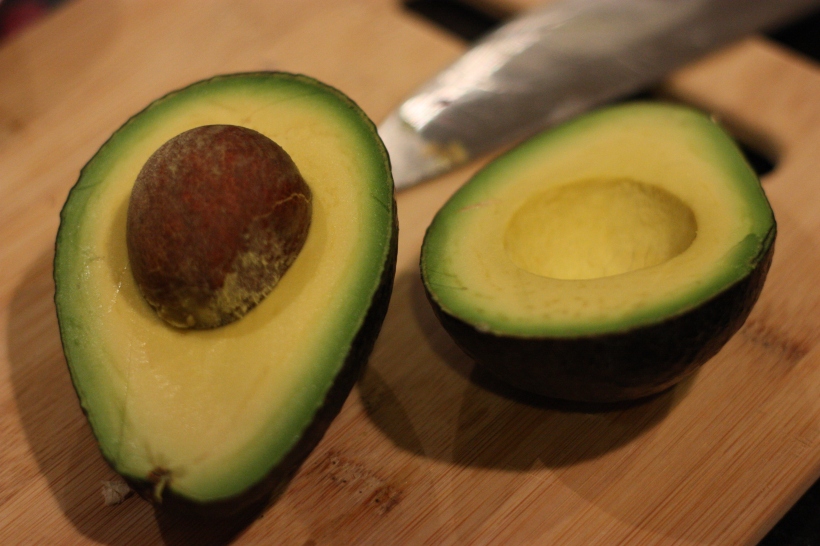

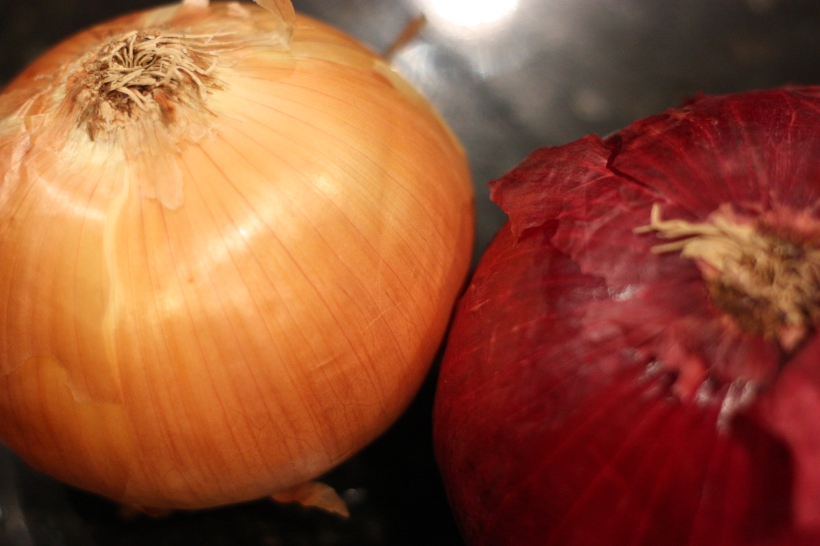
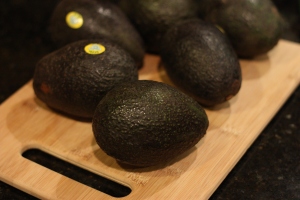



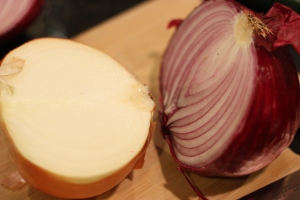

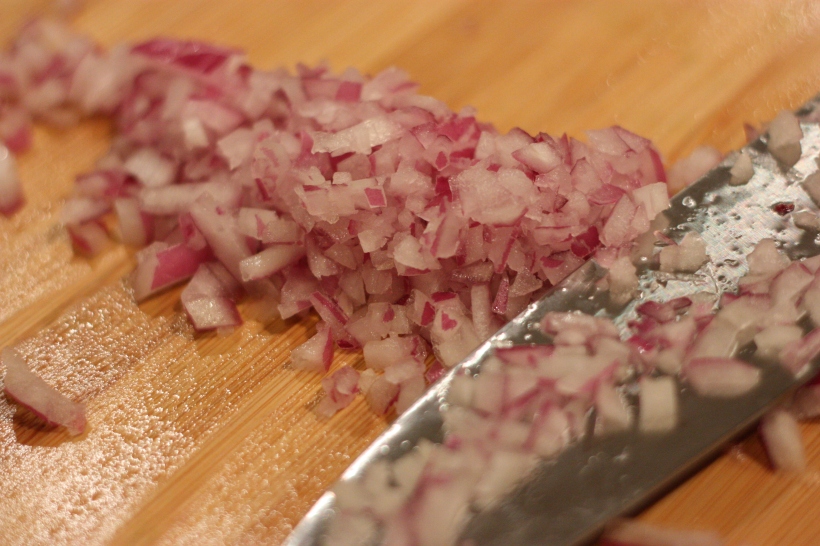
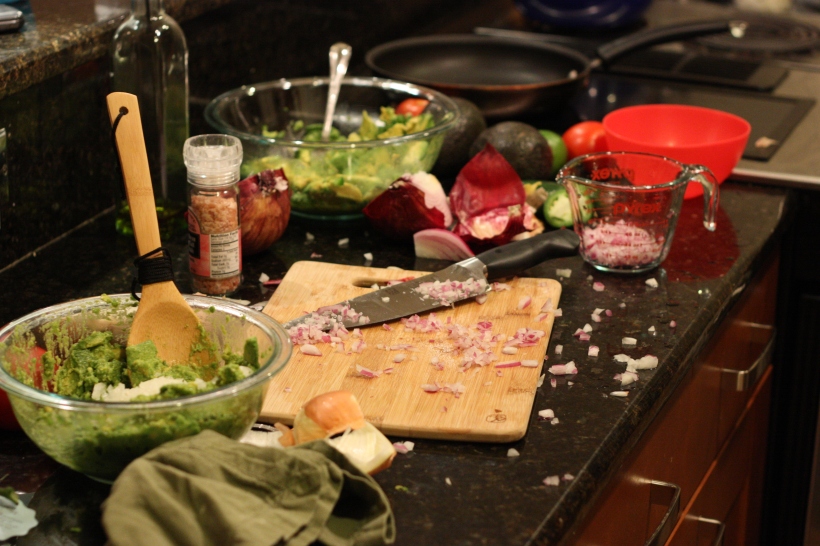
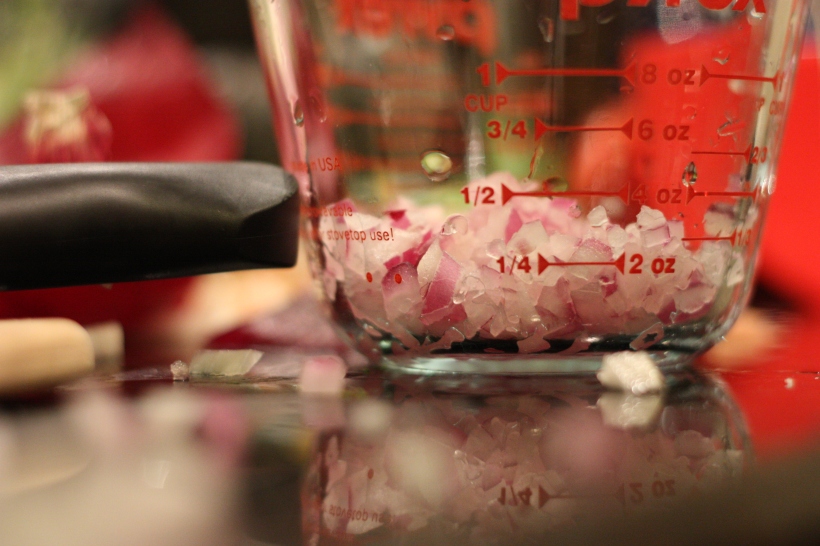

August 28, 2012 at 8:17 pm
Excellent post! Your experiment made my mouth water for some chips & salsa to accompany the tasty guac. My personal preference is for red onion but I have also opted for a little chopped cilantro in my guac for that south of the border feeling (1 T approx). Try it some time.
Also, kind sir, I have to ask you for an addendum to your recipe to correct for an oversight (though it doesn’t change your experiment). As you correctly point out the flaws in many guacamole recipes regarding the “type” of onions used, you then proceed with the same egregious mistake in yours by simply adding “2 tomatoes.” Well…what kind???? Beefsteak? Roma? Cherry? Heirloom? Standard globe? Does it matter? Do you care? Will the world stop spinning? Am I being a PITA? 🙂
Pingback: Brownies Experiment – No oil, no problem « Obedient Ingredients
Pingback: Gazpacho and Tomatoes « Obedient Ingredients
September 24, 2012 at 4:37 pm
I suppose the smartest way to make guacamole going forward is to use half a white onion and half a red onion?
Pingback: Brownies Experiment: No Oil, No Problem PART 2 | Obedient Ingredients